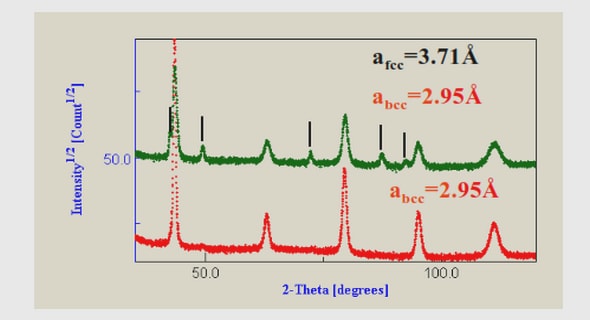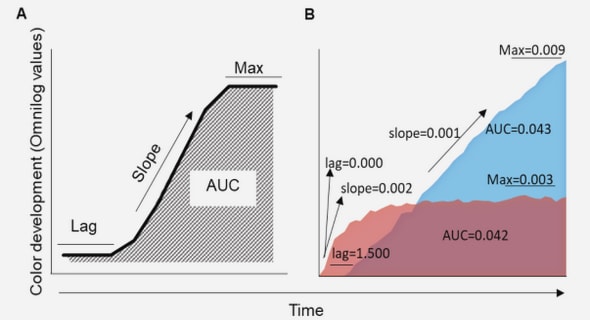Get Complete Project Material File(s) Now! »
Interval exchange transformations and renormalization algorithms
Following the notations of [MMY] and [AGY], we recall some classical notions of the theory of interval exchange transformations (see also [Via], [V4]). In particular, we give the denition of Rauzy induction and renormalization procedures. The rough idea is the following: given an i.e.t. f, we look at the rst-return map induced by f on some subintervals that are chosen smaller and smaller. This allows us to accelerate the dynamics in phase space in order to capture asymptotic behaviors such as weak mixing.
But each return map is itself an i.e.t., and the corresponding changes of parameters dene a dynamics in parameter space. We also recall some classical notions on translation surfaces and translation ows, which are a continuous counterpart to i.e.t’s. By Veech’s \zippered rectangles » construction, it is possible to suspend any i.e.t. to a ow on a translation surface, which is obtained by gluing rectangles on each subinterval and performing certain identications between them. In the space of \zippered rectangles », the extension of Rauzy induction can be seen as a cocycle, called the Rauzy cocycle. Similarly it is possible to dene a cocycle over Rauzy renormalization map, and we will see that by considering rst-return maps to a simplex compactly contained in Pd1 + , it induces a cocycle (T;A) with better properties: indeed, T has bounded distortion and (T;A) is fast decaying.
3.7. Recurrence for RR, bounded distortion and fast decay. We choose here A = f1; : : : ; dg for some integer d > 1, and denote S0 d := S0(f1; : : : ; dg). Let R S0 d be a Rauzy class and choose 2 R. Assume that for some path 0 2 (R) which starts and ends at , the coecients of the matrix B 0 are all positive. We let := B 0 Pd1 + ; it is a simplex compactly contained in Pd1 + , that we identify here with f 2 Rd ; jj := P i i = 1g. By projection on the rst coordinate, the rst-return map of RR to fg induces a map T : ! , whose domain of denition we denote by 1. By Poincare recurrence theorem, we know that 1 has full measure inside .
Let us denote by (R) the subset of paths in (R) that start and end at , and which are primitive in the sense that all intermediate vertices dier from . Then 1 admits a countable partition ( ) 2(R) , where the subset := B corresponds to those 2 1 for which (; ) 2 D rst returns to fg under RR after having followed the path in the Rauzy diagram. In particular T : 7! (B )1 j(B )1j . In the following we will denote h := (T )1. Lemma 1.11. The map T preserves a probability measure with respect to which it is strongly expanding, hence has bounded distortion.
General weak mixing for interval exchange transformations & translation ows
4.1. Weak mixing for interval exchange transformations. Let d > 1 be an integer and recall that S0 d := S0(f1; : : : ; dg). Our main result is the following. Theorem 1.17. Let 2 S0 d be an irreducible permutation which is not a rotation; then the set of [] 2 Pd1 such that f([]; ) is not weakly mixing has Hausdor dimension strictly less than d 1.
As recalled in the introduction, weak mixing for the interval exchange transformation f is equivalent to the non-existence of non-constant measurable solutions : I ! C to the following equation:
(f(x)) = e2it(x); x 2 I; (4.1) for any t 2 R. This is equivalent to the following two conditions: | f is ergodic; | for any t 2 RnZ, there is no nonzero measurable solution : I ! C to the equation (f(x)) = e2it(x); x 2 I: (4.2) Let satisfying the assumptions of Theorem 1.17. The proof follows three steps:
(1) Using fast decay and results of [Ma1] and [V2], we show that the set of [] such that f([]; ) is not ergodic does not have full Hausdor dimension.
(2) We then adapt a theorem of Veech [V4] to deal with the case where (1; : : : ; 1) =2 H() (the genus-one case is a particular instance of it).
(3) The case where g > 1 and (1; : : : ; 1) 2 H() is addressed by adapting the probabilistic argument contained in [AF] to get some estimate on the Hausdor dimension of \bad » parameters.
The rst point is handled in [MMY], x1.2.3-1.2.4. In this work the authors show that for an i.e.t. which satises Keane’s condition, there exists an integer n 1 such that all the coecients of BR n ([]; ) are positive. We won’t detail the denition of Keane’s condition; just recall that it is implied by our assumption on the coordinates of [] to be rationally independent. Moreover, a result due to Keane states that any i.e.t. satisfying this condition is topologically minimal, that is, the orbit of any point is dense. Take n 1 such that all the coecients of BR n ([]; ) are positive, and let 0 2 (R), j 0j = n, be the corresponding path in the Rauzy diagram. We also assume that 0 ends at . Let = 0 := B 0 Pd1 + be the associate simplex; in particular, it is compactly contained in Pd1 + since all the coecients of B 0 are positive. By expansiveness of Rauzy renormalization (indeed Rn R( fg) = Pd1 + fg), every point in Pd1 + fg is in the forward orbit of a point in fg, so it is enough to estimate the dimension of parameters which belong to fg and that do not come back innitely many times to it. As in Subsection 3.7, we consider the map T : ! induced by RR on ; we have seen that it has bounded distortion and that it is fast decaying for some constant 1 > 0 (see (2.4) for the denition). From Proposition 1.16, we know that the set n1 of [] 2 whose iterates do not come back to innitely many times has Hausdor dimension less than d 1 1 1+1 . Therefore, we deduce from the above criterion that the set of [] 2 such that the i.e.t. f([]; ) is not uniquely ergodic has Hausdor dimension less than d 1 1 1+1 . By the previous remark on expansiveness, we have thus obtained:
Theorem 1.18. Let d > 1 and let 2 S0 d; the set of [] 2 Pd1 + such that f([]; ) is not uniquely ergodic has Hausdor dimension strictly less than d 1.
Study of the weak-stable lamination
5.1. The probabilistic argument of Avila and Forni [AF]. As in [AF], we consider here an abstract locally constant integral cocycle (T;A). We also assume that T has bounded distortion 6, and that (T;A) is fast decaying; as we have already seen, this implies that (T;A) is log-integrable. Let Pd1 + be a compact set adapted to (T;A) (see (4.7) and (4.8) for the denition). We dene J = J () to be the set of lines in Rd, parallel to some element of and not passing through 0. Recall the denition of the weak-stable lamination associated to the cocycle (T;A) at some point x 2 : Ws(x) := fw 2 Rd; kAn(x) wkRd=Zd ! 0g;
Table of contents :
Remerciements
Introduction
1. Cocycles
2. Melange faible pour les echanges d’intervalles et ots de translation
3. Accessibilite pour les systemes dynamiques partiellement hyperboliques
4. Etude d’une famille d’automorphismes polynomiaux de C3
5. Theorie spectrale des operateurs de Schrodinger quasi-periodiques unidimensionnels
Chapter 1. Weak mixing for interval exchange transformations and translation ows
Introduction
1. Outline
2. Background
3. Interval exchange transformations and renormalization algorithms
4. General weak mixing for interval exchange transformations & translation ows
5. Study of the weak-stable lamination
6. End of the proof of weak mixing
Chapter 2. Crprevalence of stable ergodicity for a class of partially hyperbolic systems
1. Introduction
2. Preliminaries
3. Random perturbations
4. Submersion from parameter space to phase space
5. Finding spanning cfamilies with slow recurrence
6. A stable criterion for stable values
7. Holonomy maps associated to a family of loops
8. Constructing charts and vector elds
9. On the prevalence of the accessibility property
Appendix A
Appendix B
Appendix C
Chapter 3. Dynamics of a family of polynomial automorphisms of C3, a phase transition
1. Preliminaries
2. Introduction to the results
3. Degree growths & invariant brations
4. Centralizers
5. Dynamics on the invariant hypersurface z2 = 0
6. Points with bounded forward orbit, description of the stable manifold Ws (0C3 )
7. Birational conjugacy
8. Denition of a Green function for
9. Analysis of the dynamics of the automorphism
Bibliography
Chapter 4. Asymptotics of spectral gaps for quasi-periodic Schrodinger operators
1. Introduction and main results
2. Preliminaries
3. Quantitative almost reducibility
4. Almost localization and duality argument
5. Global to local reduction
6. Moser-Poschel argument and the gap estimates
7. The monotonicity argument
8. Homogeneous spectrum
Bibliography


